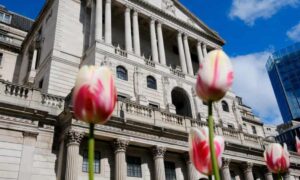
Financial markets, which were baying for a cut last May, are these days betting that August or possibly September will be the point at which the Bank starts to lower interest rates from their current level of 5.25%.
The reason for the delay can be found in the UK’s improving economy, which some on the Bank’s monetary policy committee (MPC) believe could trigger the return of inflation later in the year.
Higher shop prices would be embarrassing if victory in the fight against inflation had already been declared. Would the central bank have to raise interest rates again if that happened? Inside the Grade I-listed Threadneedle Street edifice that houses the Bank of England’s headquarters, a U-turn is considered unconscionable. And if the economy can grow when interest rates stand at 5.25%, why hurry to bring down the cost of borrowing?
In an election year, the government might feel more of a sense of urgency about a reduction. After the historic swing against the Conservatives in the Blackpool South byelection and the loss of many council seats, a return to some kind of normal economic progress is considered by many ministers to be their best hope in the battle with Labour.
With inflation forecast to fall below the 2% target as early as next month, pressure on the Bank to cut rates, and by more than once this year, is likely to intensify as Tory frustration grows.
The independent Bank will be more focused, however, on the dismay among businesses and mortgage-payers needing to refinance their loans. If consumer and business confidence, which has improved in recent months, goes into reverse, the economy will suffer and dramatic cuts in interest rates will be needed to spur a revival.
How robustly the UK has recovered from its recession last year will be revealed by the Office for National Statistics when figures covering the economy’s performance over the first three months of this year are published on Friday.
